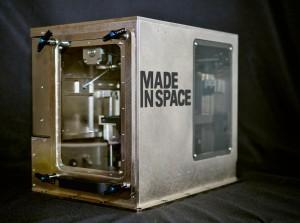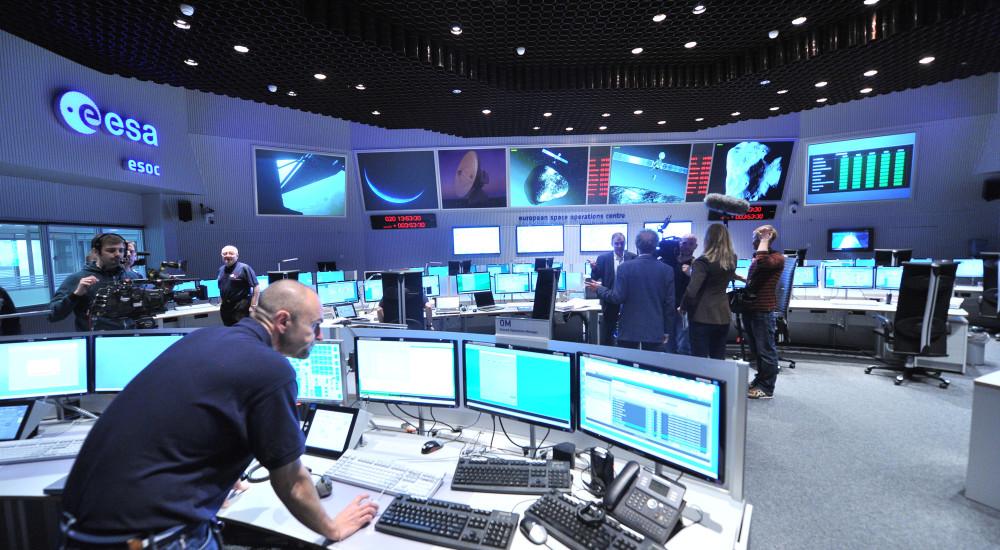 In the past few years 3D printing has slowly but surely begun transforming the aerospace industry. It started simply enough, with prototyping and testing, and then developed into the development of end-use metal 3D printed components being used in engines and aircraft. From there 3D printing worked its way over to NASA and commercial spaceflight companies like SpaceX where 3D printed parts found their way into the next generation of rocket engines. Most recently 3D printed components were used in the Falcon 9 rocket engine that SpaceX successfully landed after being launched into orbit. The ability to create components with complex geometries that are impossible to manufacture traditionally is quickly making 3D printing indispensable to the aerospace and space industries.
In the past few years 3D printing has slowly but surely begun transforming the aerospace industry. It started simply enough, with prototyping and testing, and then developed into the development of end-use metal 3D printed components being used in engines and aircraft. From there 3D printing worked its way over to NASA and commercial spaceflight companies like SpaceX where 3D printed parts found their way into the next generation of rocket engines. Most recently 3D printed components were used in the Falcon 9 rocket engine that SpaceX successfully landed after being launched into orbit. The ability to create components with complex geometries that are impossible to manufacture traditionally is quickly making 3D printing indispensable to the aerospace and space industries.
However the technology being used to make those advanced engine parts is all Earth-based, when the real goal is to create 3D printing technology that can work in space. With the recent success of Made in Space and their Zero-Gravity 3D Printer, using additive manufacturing in space is beginning to explode. Made in Space is developing several new projects for use on the ISS, including the Additive Manufacturing Facility (AMF) which is a permanent manufacturing facility that will replace the existing temporary 3D printer, as well as the R3DO, a material recycler that allows the ISS to meltdown and re-use plastic waste by converting it into printing filaments. Made in Space is also developing new 3D printing technology that will work in the vacuum of space.
But it isn’t just NASA looking to the private sector to develop the next generation of space additive manufacturing technology. Last year the European Space Agency (ESA) awarded a significant grant to Dublin’s Trinity College to develop advanced metal 3D printing technology in the form of helium cold spraying technology. The environmentally friendly process will help the ESA manufacture new green space technology, and will also be faster and less expensive. And now they’re taking the next logical step and looking to develop the ability to manufacture and prototype new technology in space.
In order to achieve their goal, the ESA’s Manufacturing of Experimental Layer Technology (MELT) project has just formed a consortium of four European companies to create an advanced Additive Layer Manufacturing (ALM) breadboard machine. The new MELT consortium includes Germany-based Active Space GmbH, a developer of electro-mechanical technology that is capable of functioning in extreme environments and their Portuguese sister company Active Space SA. Germany’s low-orbiting and geostationary satellite manufacturer and long-time ESA collaborator OHB Systems AG will also be part of the consortium. Rounding out the list of members is the Portuguese desktop 3D printer manufacturer BEEVERYCREATIVE.
The primary goal of MELT is to explore, design, build and test a fully functional ALM breadboard model. The ALM breadboard (prototyping circuit board) will need to function under the extreme microgravity conditions found on the ISS and other future spacecraft. It will be used to 3D print tools and components with industrial-grade engineering polymers that will result in parts with high-end mechanical and thermal properties. BEEVERYCREATIVE was brought in to leverage their desktop 3D printing experience to help develop the ALM breadboard model and the operating software that will run it.
The delivery date of the MELT project is expected sometime in May 2017 and will be divided up into several individual phases, each with its own goals and guidelines. The first phase is the study of state-of-the-art 3D printing and ALM technologies, which will be followed by the actual hardware and software development phase. Once the ESA has a working prototype they will take it into the breadboard testing phase, and finally an agency-wide evaluation of any resulting 3D printed tools, parts and components. Discuss this story in the Space Station Breadboard forum on 3DPB.com.
Subscribe to Our Email Newsletter
Stay up-to-date on all the latest news from the 3D printing industry and receive information and offers from third party vendors.
You May Also Like
Gorilla Sports GE’s First 3D Printed Titanium Cast
How do you help a gorilla with a broken arm? Sounds like the start of a bad joke a zookeeper might tell, but it’s an actual dilemma recently faced by...
Nylon 3D Printed Parts Made More Functional with Coatings & Colors
Parts 3D printed from polyamide (PA, Nylon) 12 using powder bed fusion (PBF) are a mainstay in the additive manufacturing (AM) industry. While post-finishing processes have improved the porosity of...
$25M to Back Sintavia’s Largest Expansion of Metal 3D Printing Capacity Since 2019
Sintavia, the digital manufacturing company specializing in mission-critical parts for strategic sectors, announced a $25 million investment to increase its production capacity, the largest expansion to its operations since 2019....
Velo3D Initiates Public Offering in a Bid to Strengthen Financial Foundations and Drive Future Growth
Velo3D (NYSE: VLD) has been among a number of publicly traded 3D printing firms that have attempted to weather the current macroeconomic climate. After posting a challenging financial report for 2023,...


































